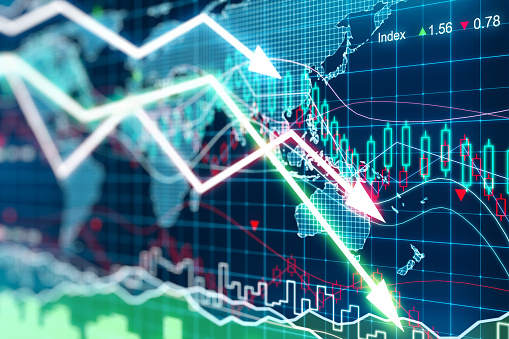What is a Recession in the Economy?
In simple terms, a recession is a period of negative economic growth for two consecutive quarters. This can occur as a result of a variety of reasons, including economic shocks, financial panics, and changes in economic expectations. As economist John Maynard Keynes put it, recessions are the “disintegration of animal spirits”. While most firms suffer during a recession, research shows that there are ways to lessen the damage.
Economic indicators that can warn of a recession
Several indicators can predict the onset of a recession, including changes in the number of new housing projects, the stock market, and the number of jobs in manufacturing. When these indicators decline, the economy is experiencing a contraction and fewer people are spending money. Other signs of a recession include a drop in home prices and a reduction in new business creation. Fortunately, the government can intervene with monetary and fiscal policies to prevent a recession or delay its onset.
These indicators are a useful tool to gauge the health of the economy. While they are not perfect, they can be useful in gauging the mood of the various economic actors and gauge the health of the economy. By tracking these indicators over time, analysts can build a more complete picture of what is happening in the economy and identify deviations from expectations.
Some economists look to confidence indexes as an early indicator of recession. These indexes reflect the overall confidence of consumers and businesses. These are important indicators, because they give forecasters a sense of consumer confidence. However, the indexes themselves can be misleading. The more information a forecaster has, the better.
Another indicator that is useful in predicting recession is the yield curve. The spread between the yield on long-term government bonds and the yield on short-term government bonds has an inverted relationship. When this relationship is inverted, investors lose faith in the economy and a recession is imminent. This indicator has accurately predicted every U.S. recession since 1970, and it has only missed one.
Other indicators that can warn of a recession include sudden changes or disruptions. For example, sudden changes in external conditions, such as an earthquake, can disrupt production. Natural disasters can also disrupt infrastructure and cause a recession. These events can be local or national, or even global. The COVID-19 pandemic, for example, was one of the worst disruptions of the 20th century, affecting millions of people.
A recession is an economic slowdown that lasts longer than a few months. According to the National Bureau of Economic Research, a recession occurs when real economic activity has decreased by more than a quarter. This decline will most likely be reflected in real GDP, employment, industrial production, and wholesale-retail sales.
Causes of a recession
Recessions can be caused by several factors. These factors include a financial crisis, an increase in interest rates that make borrowing more expensive and reduce demand, and a decrease in asset prices, leading to a negative multiplier effect. In addition, rising unemployment reduces consumer spending, fueling a vicious cycle. In many cases, recessions are natural and are necessary for the economy to recover and move forward.
The causes of recessions are complex and vary from country to country. There are multiple indicators of recessions, such as unemployment, real GDP, and the yield curve. A recession can be identified by observing these indicators, but they are not reliable predictors. Recessions can last for two quarters or more, and can result in a 1.5% decline in real GNP. Furthermore, the unemployment rate can rise two percentage points and cause a drop of 15% in non-agricultural employment. Several other factors can trigger a recession, including a change in the structural balance of the economy, which often causes a drop in the real economy.
Another cause of a recession is the overextension of credit. This leads to a huge buildup of risk in the financial sector. This can also lead to risky asset price bubbles. The Federal Reserve has taken steps to combat this problem by increasing interest rates. Moreover, they are monitoring the state of the economy and intervening to prevent a recession from erupting.
In general, recessions reduce the demand for goods and services and lead to a decrease in consumer confidence. As a result, households tend to cut their spending, which results in a decrease in economic output. In addition, it decreases the number of people working and affects tax revenues. As a result, stock markets tend to struggle and companies may be forced to lay off employees. This is often bad news for investors and can create panic in the market.
Fortunately, most recessions do not last long. They typically last two to 18 months, but it can feel like an eternity for those directly affected by the slowdown. Therefore, investors with long-term investment horizons should keep a close eye on the bigger picture. A recession does not mean the end of the world, it simply means that the economy is still far from the point where it was in 2006.
A recession is an economic slowdown that affects all countries. It can be triggered by a number of different factors. For example, a recession could be triggered by a decrease in the number of people working, an increase in the number of unemployed people, or an increase in the cost of goods.
In the United States, the unemployment rate is one of the clearest indicators of recession, and it can be a signal for a major economic collapse. As a result, it is often difficult for the economy to recover from recession-induced job losses. Nonetheless, some countries are better prepared than others when it comes to a severe economic crisis.



